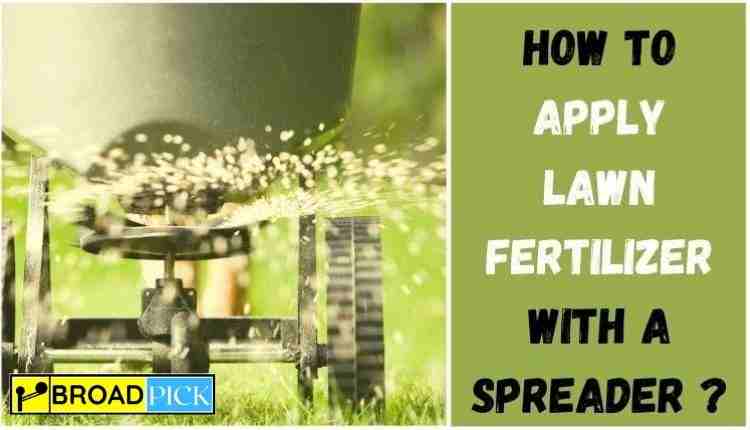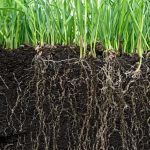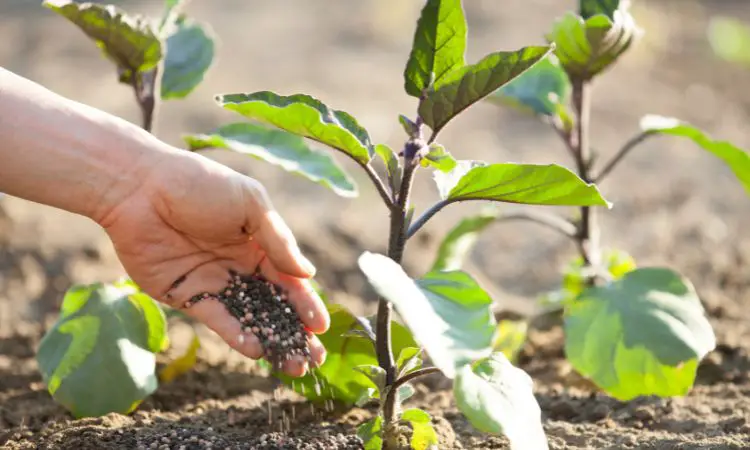We, as a gardener know how annoying when it is a matter of getting rid of grass in the vegetable garden.
I am an Agriculturist, And I know how viable the grass seed is. It is said that where you find a drop of water, you will find grass.
So knowing that I can suggest you some key techniques to keep away the grass from your beloved garden.
But before that, in a short answer- to get rid of grass in a vegetable garden, manually remove the grass by pulling it out from the roots or using an herbicide specifically formulated for grass removal is a good option in vegetable gardens.
Along with those processes, you can also do-
- Removing the top soil layer (6/8inch)
- Solarization
- Cardboard Smothering
- Newspaper Mulching
- Vinegar Weed Control
- Boiling Water
- Corn Gluten Meal
- Flame Weeding
- Salt Barrier
- Garden Grazing Animal.
- Herbicides.
Details Methods of How to Get Rid of Grass In Vegetable Garden?
If you’re planning to eradicate the grass from your garden area, you can use both chemicals or natural methods.
Let’s discuss some of them here-
1) Removing the top soil layer (6/8inch)
Removing the top 6 to 8 inches of soil may be necessary to promote plant growth. This is because the topsoil is the most nutrient-rich layer of soil.
It is also the layer of soil that is most easily worked with.
To remove the topsoil, you can use a spade or a sod cutter. The long, flat blade of a spade is useful for digging.
Again sod cutter is a power tool that is used to cut through sod, which is the thick layer of grass and roots that grows on top of the soil.

Once you have removed the topsoil, you can add new soil or compost to the bed. You can also add fertilizer to help your plants grow.
Here are some additional tips for removing the topsoil:
- Work in a small area at a time.
- Be careful not to damage the roots of your plants.
- If you are using a spade, make sure the blade is sharp.
- If you are using a sod cutter, make sure the blade is clean.
- After you have removed the topsoil, level the bed and add new soil or compost.
- Water the bed well.
2) Solarization
Solarization is the process of covering a field, garden bed, or lawn with a clear plastic sheet to heat the soil underneath. Due to the radiation of the sun, and the high heat of the soil surface, the plants inhibit of photosynthesis, respiration, and evapotranspiration.
That is why it will naturally decrease the growth rate of grass in your garden. Furthermore, if the pathogen or pest is present on the soil surface, it will also be eradicated quickly.
Generally, it takes about several days to a month to destroy the grass. However, it’s not suitable for some kinds of grass like Bermuda grass.
But if the garden is covered with fescue or bluegrass, then it’s good to use this technique.
3) Cardboard Smothering
By blocking the sunlight on the grass will gradually kill it. The average sunlight in a day in the United States is around 9.5 hours. These (Arizona, New Mexico, Nevada, Texas, California, Colorado, Oklahoma, and Kansas ) are the sunniest states in the USA.
So, if you can block the light for the day period in a cost-effective way like cardboard, it will help you to keep the grass away.
The process is simple.
- Organize your garden and measure how much of cardboard is needed. If need multiple layers the use it.
- Then if the garden has vegetation, then mow it.
- Now use of frequent water to the place and spread over the whole area.
- Now its time to put the all cardboard above the soil layer that you prepared.
- After doing that, wait for 5-6 weeks and you will get darkish grassless land.
Now plan your garden design.
4) Newspaper Mulching
Newspapers can be a helpful way to keep weeds away in your garden.
You start by putting a thick layer of newspaper on top of the grass.
Then, you cover the newspaper with mulch. The mulch pushes the newspaper onto the grass, which stops the grass from growing.
If you sprinkle water over the area, it helps the mulch stay down and the grass breaks down faster.

Here are some tips for using newspaper as a weed barrier:
- Make sure the soil is a bit wet before you put down the newspaper.
- Lay the newspaper down close to the plant roots, but don’t cover them.
- Keep the newspaper about 1-2 inches away from the plant stems.
- If it’s windy where you live, use special staples to hold the newspaper in place.
- Make sure to cover the newspaper with more mulch in the fall or winter, and make sure the cardboard and mulch get wet.
5) Vinegar Weed Control
Though we use vinegar for dishes, it can be used for grass removal. It mainly contains 4–7% acetic acid and 93–96% water.
You can make it better by adding some soap, salts, and bleaching powder, and mixing it in gallons of water, Then spraying it over the grassland, It will destroy the grassroots by acidic proliferation over the period.
Here is your need:
- 1 gallon of white vinegar
- 1 cup of table salt
- 1 tablespoon of liquid dishwashing soap
- 1 tablespoon Bleaching Powder (Optional)
6) Boiling Water
A boiling water has the capability of destroying the plant tissue permanently, So does the grass also.
In fact, it is one of the cost-effective methods for the eradication of grass from gardens.
But the drawback is you can not destroy the root system of the grass by this method. After a few weeks, it will further generate the grass.
So, you must follow the other methods and integrate with them.

7) Corn Gluten Meal
If you searching for an organic method but effective as a herbicide the corn gluten meal (CGM) will good option. It’s a natural, non-toxic by-product of the wet corn-milling process.
It mainly works by inhibiting the root formation of germinating grass. If the garden is full of broadleaf or even crabgrass then it’s too effective against it.
CGM is a pre-emergent herbicide, so it prevents grass and weed seeds from sprouting.
It won’t eliminate existing weeds, but it can prevent new ones from sprouting.
However, for practical use, apply about 20 pounds of CGM per 1000 Sq/ft of the garden.
I hope you will see the results within a few days.
8) Flame weeding
Flame weeding is a cool way to get rid of weeds in your garden without using any chemicals.
It’s like giving the weeds a little heat shock.
Here’s how it works:
- You use a special tool, like a propane torch, that makes a really hot flame.
- Then, you quickly pass the flame over the weeds.
- The heat from the flame makes the water and juice inside the weed cells get super hot and expand.
- This makes the weed cells burst, and the weed wilts and dies.
The best part about flame weeding is that it’s a fast and effective way to say goodbye to those pesky weeds.
You can use it in places like your garden beds, on your patio, or even in the cracks on your sidewalk.

9) Salt Barrier
Salt can work as a barrier to keep weeds away from places where a lawnmower can’t reach, like the edges of your lawn.
But we need to be careful because salt can harm plants too. When salt gets washed away by rain or sprinklers, it can hurt the grass and plants that grow near your garden.
Read: How to Use 13-13-13 Fertilizer For Vegetable Garden?
10) Garden Grazing Animal.
Some animals that can be used for weed control in a yard include goats, horses, and cows. These animals will eat weeds while grazing on grass.
However, you should keep them away from vegetable gardens and other plants.
It’s not recommended, but if you fail to take care, then this animal will destroy all your vegetables and grass.

11) Herbicides.
You can finally consider the herbicide method if everything fails or needs immediate effects. Lots of herbicides are available to treat with-
You can consider these factors while choosing it-
- The type of weed you want to target
- The grass type you have
- Whether the herbicide is pre-emergent or post-emergent
- The dosage and timing of the application
From the vast market of herbicide, these are the grass-selective herbicides including fenoxaprop-ethyl, fluazifop-p, sethoxydim, and clethodim.
Or If you’re searching for some brand names online-
- Gowan SedgeHammer Selective Herbicides
- Alligare 2,4 D Amine Herbicide
- PBI Gordon Corporation Ornamec 170 Grass Herbicide
- Image Nutsedge Killer Concentrate
- Meso 4SC Select Herbicide
- Monterey Turflon Ester Specialty Herbicide Concentrate
- Drive XLR8 Herbicide Crabgrass Killer
- BioAdvanced Bermudagrass Control for Lawns
Use as per the guidelines that the company mentioned and get your garden clean.

Why Is It Important to Maintain a Grass-Free Environment in a Vegetable Garden?
As an overall consideration, for a gardener, a grass-free environment is always appreciated for plant health.
It will maximize the growth and productivity of your plants. Besides a vegetable garden not only ensures better productivity and easier maintenance but also provides several other benefits.
Here are some of the keynotes-
Benefits of Removing Grass From Your Vegetable Garden:
Enhanced nutrient uptake:
Grass competes with vegetables for nutrients in the soil.
Generally, the nutrient uptake efficiency of plants is usually less than 50%. But if you think about perennial grasses then the amount is 20-70%.
So it indicates how it will increase your nutrient management in the garden.
So as a grass-removing practice, you allow your vegetables to receive an optimized amount of nutrients, leading to better growth and overall health.

Reduced weed competition:
Grass acts as a natural weed cover, making it challenging to control unwanted plants in your garden.
Again, some grass species can make a complex ecosystem that consists of several weeds. So when your lawn or garden is full of grass it will impact your garden and vegetation.
Some species in your garden that you should be aware of are-
- Crabgrass,
- Annual bluegrass,
- Creeping bentgrass,
- Quackgrass,
- Doveweed,
- Dallisgrass,
- Nutsedge,
- Goosegrass.
If you find these in your garden, you must take immediate initiative to deter this. Otherwise, it will fall apart in your whole garden area.
Read: How Long Does It Take For Granular Fertilizer to Dissolve?
Minimized water competition:
As I said before, whatever you give in your garden crops, if you can’t manage grass then It will eat most.
That means grass can be a thirsty, needy, nutrient taker, and even fertilizer consumer. So, a higher amount of grass in your garden impact negatively.
However, grass is a water-loving plant, and its presence in your vegetable garden can result in water competition.
According to research conducted by Pennsylvania State University, grass can uptake 2 inches of water per hour in a garden, So it depends on how much water it will require as per the local climate and environment.
But this is one reason to keep away grass from vegetable gardens.

Improved air circulation:
Grass will create a dense mat, obstructing air circulation in your vegetable garden.
It will be more complicated when you want to till your garden.
Nearly the vegetable garden, may require tillage about every 3 months interval.
But within this period, these grasses will cover up the soil layer and obstruct the air circulation.
So when you get rid of grass, you create a more conducive environment for your vegetables, reducing the risk of fungal diseases and promoting healthier plants.
Easier garden maintenance:
In general, the removal process is very time-consuming and labor-intensive.
If you do it manually, it may take several days to 1 or 2 weekends, but with a rotortiller, it can minimize the time. In fact, a rotor tiller can till 1,000 square feet of soil in about two hours.
Whatever the time, you need to reserve the time for doing this process.
So, it will save you time with easy garden maintenance.
Now, clear out that grass and give your vegetable garden the attention it deserves.
Frequently Asked Questions Of How To Get Rid Of Grass In Vegetable Garden
How Do You Kill Grass Without Killing Vegetables?
To kill grass without harming vegetables, use natural methods like hand-pulling, mulching, or using vinegar and water mix.
Besides a thick layer of parchment paper, cardboard, or even black soil mulch will be beneficial without killing vegetables.
Finally, the newspaper, dense wood chips, and boiling water will help you to kill grass without killing vegetables in your garden.
How Do You Kill Grass In A Vegetable Garden?
You can manually pull it out or use organic herbicides (Corn Gluten Meal). If not possible to use then use these processes are-
- Vinegar.
- Solarization.
- Boiling Water.
- Mulching.
- Baking Soda.
- Layering
What Will Kill Grass But Not Garden Plants?
A selective herbicide can kill grass without harming garden plants. They are specifically used for certain types of grass and kill them.
They are toxic to only certain plants or weeds.
- 2,4-D amine selective weed killer
- Clethodim (GrassOut Max, Arrest Max)
- Fenoxaprop (Acclaim Extra)
- Fluazifop (Fusilade II, Ornamec)
- Sethoxydim
Overall, selective herbicides can be a safe and effective way to control unwanted vegetation.
Conclusion
A weed-free garden will be more productive and beautiful and will provide you with plenty of delicious vegetables. So taking these steps will definitely help you to eradicate the grass from your garden.
Finally, Check the keynotes-
- Prepare the soil by removing grass and weeds.
- Weed regularly using hand weeding, mulching, or physical barriers.
- Use organic herbicides as a last resort.
- Monitor your garden for new grass growth and take action immediately.
I hope you got all the information from this post. Let us know.
Reference:
https://www.melindamyers.com/articles/when-to-apply-corn-gluten
https://ecosystems.psu.edu/research/centers/private-forests/news/for-water-quality-creating-woods-instead-of-lawns
I am a graduate of Bangladesh Agricultural University, where I delved into various agricultural disciplines, equipping me with a profound understanding of agriculture. Beyond academics, I have hands-on experience in gardening and crop cultivation. My passion is to embrace sustainable farming and horticulture. With a BSc in Agriculture, I am dedicated to promoting environmentally conscious and efficient agrarian practices.
Bachelor of Science (BSc) in Agriculture (Hons.)
Master of Science. (Sustainable Agriculture & Food Security ) (MS)
Bangladesh Agricultural University




